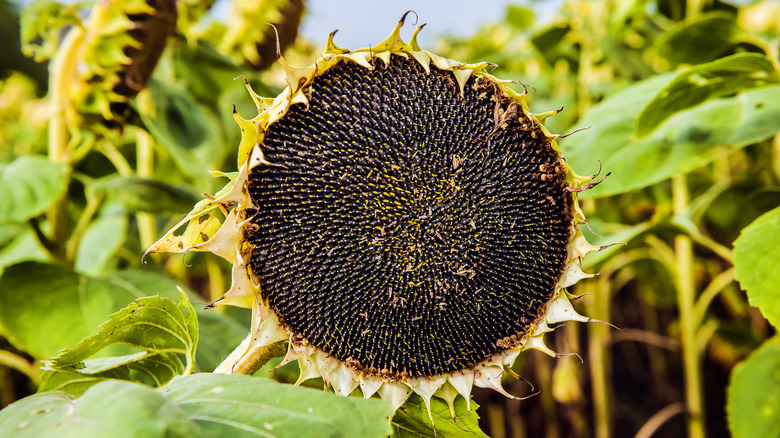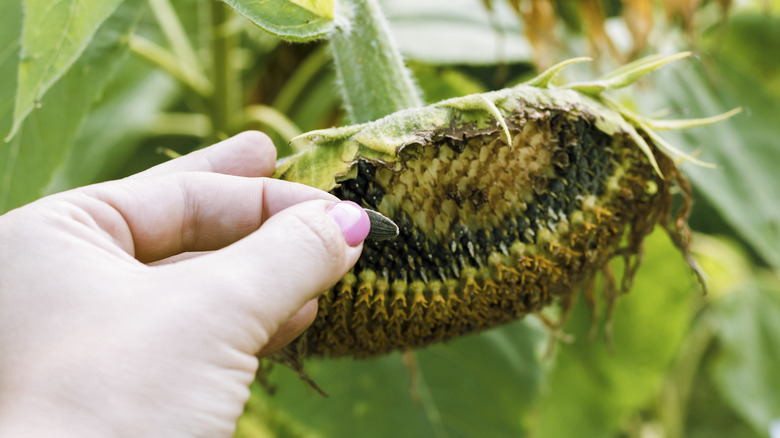How To Harvest Seeds From Your Sunflower Plant, According To House Digest's Master Gardener
Sunflowers are a bright addition to any garden. This easy-to-grow annual flower comes in a variety of shapes and sizes. While there are plenty of beautiful sunflower species, if you are growing specifically for their seeds, you'll need to plant the right varieties for the biggest and tastiest harvest. At the end of the season, your sunflower seeds will grow full and plump, making them easy to remove by hand. You can roast them for a tasty snack or store mature harvested seeds in a cool, dry place to feed the birds over the winter or plant them next season.
There are some types of sunflowers that have been developed specifically for their yummy seeds. The burpee super snack variety only grows to about 5 feet tall, but its blooms mature to 10-inch wide heads full of seeds that crack easily for snacking, as the name implies. Perhaps the most common type to grow for harvesting seeds is the mammoth grey stripe, which is available at most garden centers in the spring. These flowers live up to their name by growing up to 12 feet tall with heads that are over 1 foot wide when it's time to harvest. Sunflowers are not picky about soil, as they tolerate drought and do not have any special fertilization requirements. For the full range of beauty and harvest, you can grow several varieties in your garden.
Harvesting sunflower seeds
Choosing the right time to harvest your seeds can be a little tricky. Seeds will not grow much more in the shells if you harvest too early, but if you leave them too long, squirrels and birds may enjoy your harvest before you get to it. Once most of the petals have fallen away, take a look at the seeds. They should be full and puffy, like what you'd see for sale in the supermarket. If they are thin, those inside have not matured, so you will need to wait a little longer. When most of the seeds are mature, deadhead your sunflowers, leaving about 4 inches of stem to make them easier to handle during the harvest. You may want to wear gloves as you work with sunflowers because they could irritate your skin.
Mature seeds will come off the head easily, and all you need to do is gently loosen them with your fingers. Start at the outside of the dry head and rub the top of the seeds so they fall off over a bucket or sheet. Keep working your way around the spent bloom until all the mature seeds have been removed. There will likely be some immature seeds left, so hang the head in a warm and dry place to allow them to mature. You could also place the whole head outside to feed the birds whatever remains.

